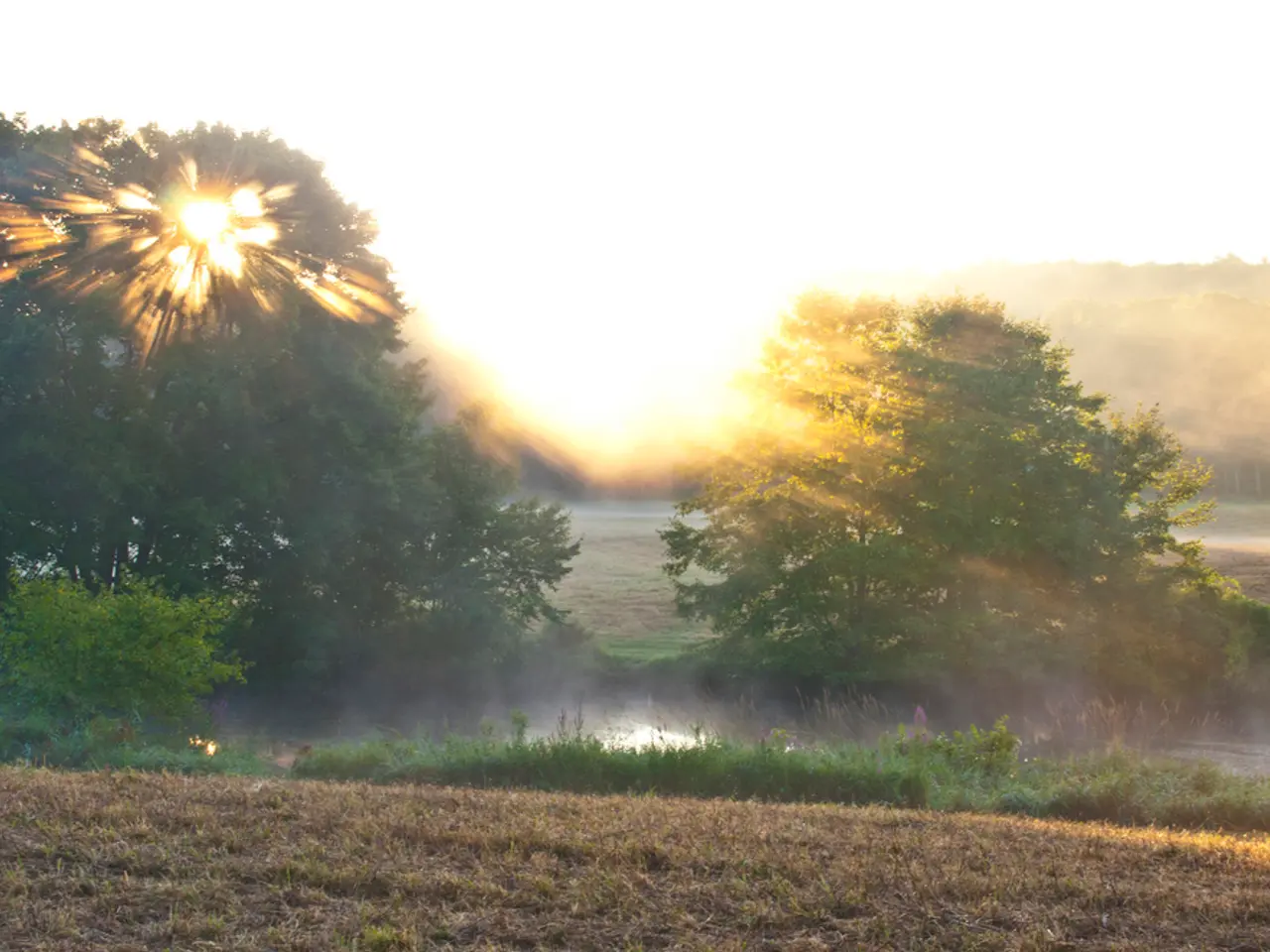Transient Ecological Phenomena: Ephemeral Life Forms Emerging Briefly
In the vast expanse of our natural world, temporary ecosystems play a significant role in maintaining its overall health and balance. These short-lived, yet vital, habitats are known as ephemeral ecosystems, and they appear and disappear based on seasons, weather, or even a single day.
Examples of ephemeral ecosystems range from seasonal ponds and snow-covered ground to sand dunes. Each of these transient microhabitats provides unique niches that sustain a variety of species, contributing to local biodiversity. Puddles and seasonal wetlands, for instance, serve as essential breeding grounds for amphibians like frogs and newts, offering safe development zones for eggs and larvae.
The importance of ephemeral ecosystems is growing in the context of rapid climate change, as they demonstrate adaptability and responsiveness. Short-lived ecosystems, such as puddles, sand dunes, dead trees, fallow fields, tree root cavities, rock depressions, and fallen leaves, support diverse species adapted to these dynamic conditions.
Seasonal wetlands, ephemeral ponds, and disturbed grasslands undergoing patch-burn grazing are examples of high-biodiversity ephemeral ecosystems. They provide unique habitats that sustain species that cannot survive in stable, long-lived habitats. These ecosystems contribute to landscape heterogeneity, enhancing biotic resistance—the ability of an ecosystem to resist invasions by non-native or "global change winner" species.
During rapid climate change, these dynamic ecosystems offer refuges and breeding grounds that can support species migration and adaptation. Their genetic and species diversity contributes to ecological stability, supporting essential functions like pollination, nutrient cycling, and food web complexity. In fact, conserving such transient yet biodiverse systems helps maintain ecological balance and mitigates the impacts of climate shifts by preserving evolutionary processes and ecosystem services.
Rock depressions or forest litter pockets create temporary aquatic environments that host a variety of life forms, from algae to microcrustaceans. Fallow agricultural fields during rest periods become dynamic spaces for wildflowers and pollinators, benefiting a range of species from solitary bees and bumblebees to butterflies and birds. Fallen leaves and decomposing plant material form a moisture-retaining ground layer, supporting fungal networks, worms, and a vast range of detritivores and decomposers, playing a crucial role in nutrient cycling and humus formation.
Dead and decaying trees in forests support a diverse array of species, including fungi, mosses, beetles, woodpeckers, and more, and contribute to new plant growth. Sand dunes and dry basins come to life after rainfall, supporting seeds adapted to dormancy that complete their entire life cycle within days or weeks. Tree root cavities left by storms collect rainwater and organic debris, forming secluded miniature ecosystems that shelter various species like amphibians, snails, aquatic insects, and fungi.
In the face of climate change, the study and preservation of ephemeral ecosystems are becoming more important than ever. While these temporary habitats often go unnoticed due to their lack of lasting trace, their role in maintaining biodiversity, nutrient cycling, and the overall health and stability of the natural world cannot be underestimated.
Science has revealed the significant role of ephemeral ecosystems in health-and-wellness, particularly environmental-science, as they offer unique habitats and contribute to local biodiversity. For instance, seasonal wetlands serve as essential breeding grounds for amphilans, demonstrating the diverse lifestyle options that these temporary systems support.




